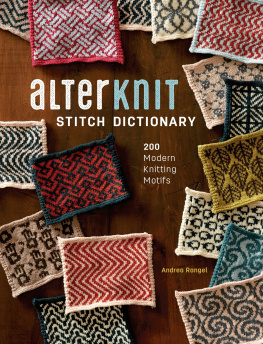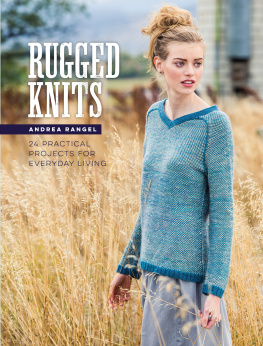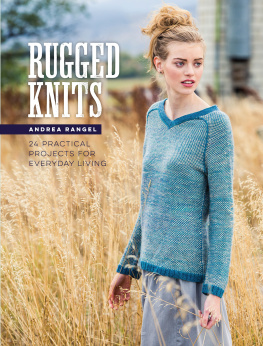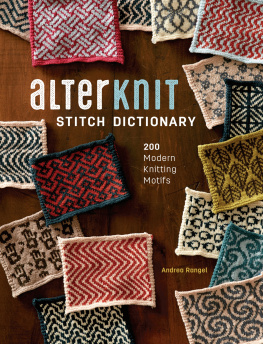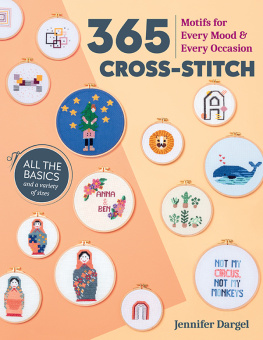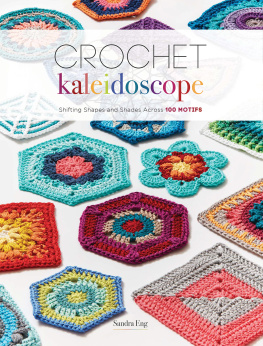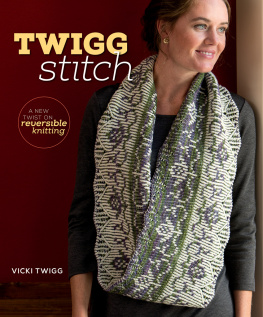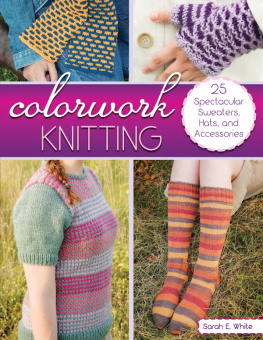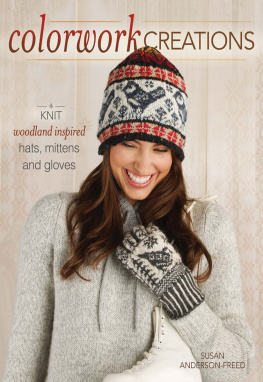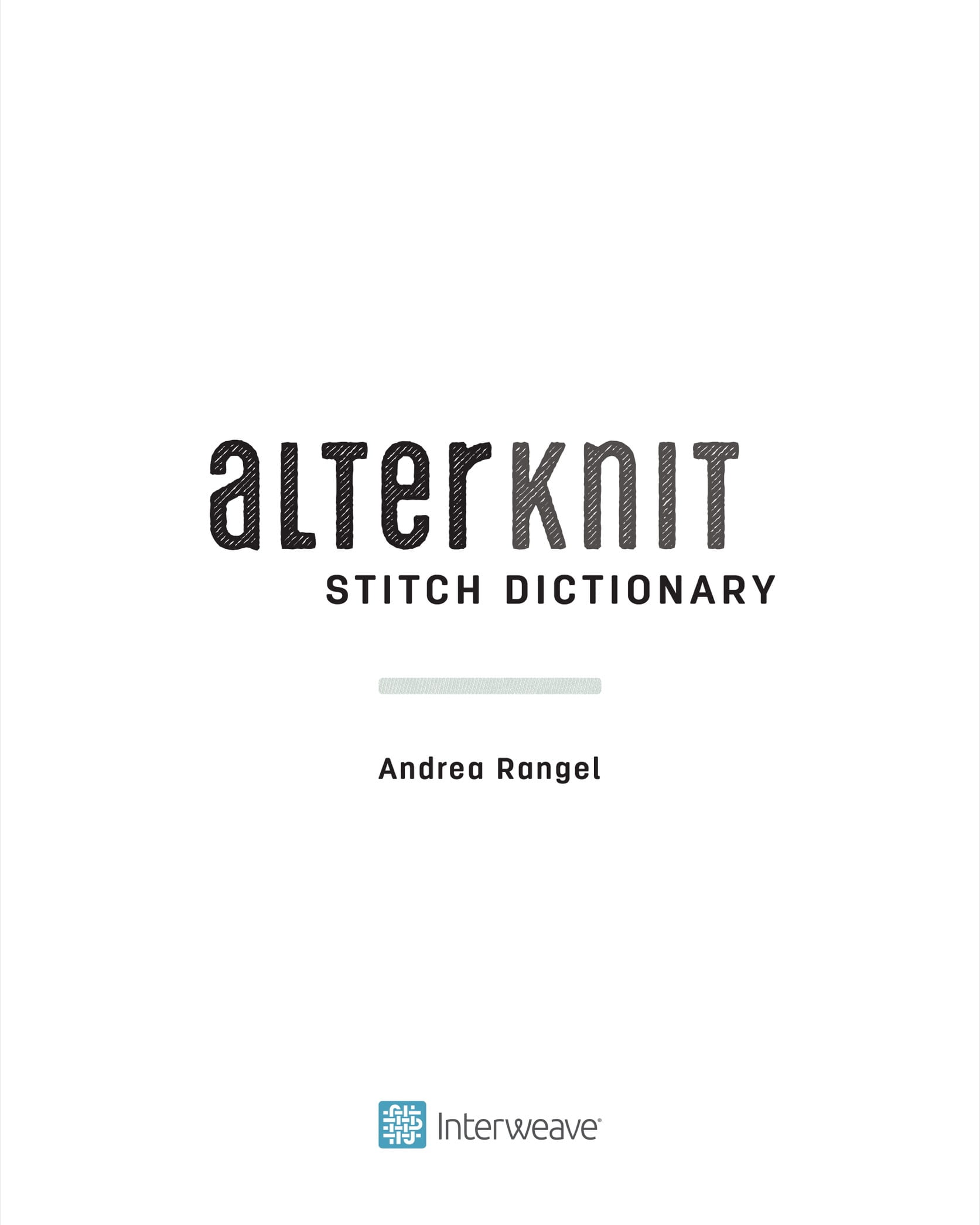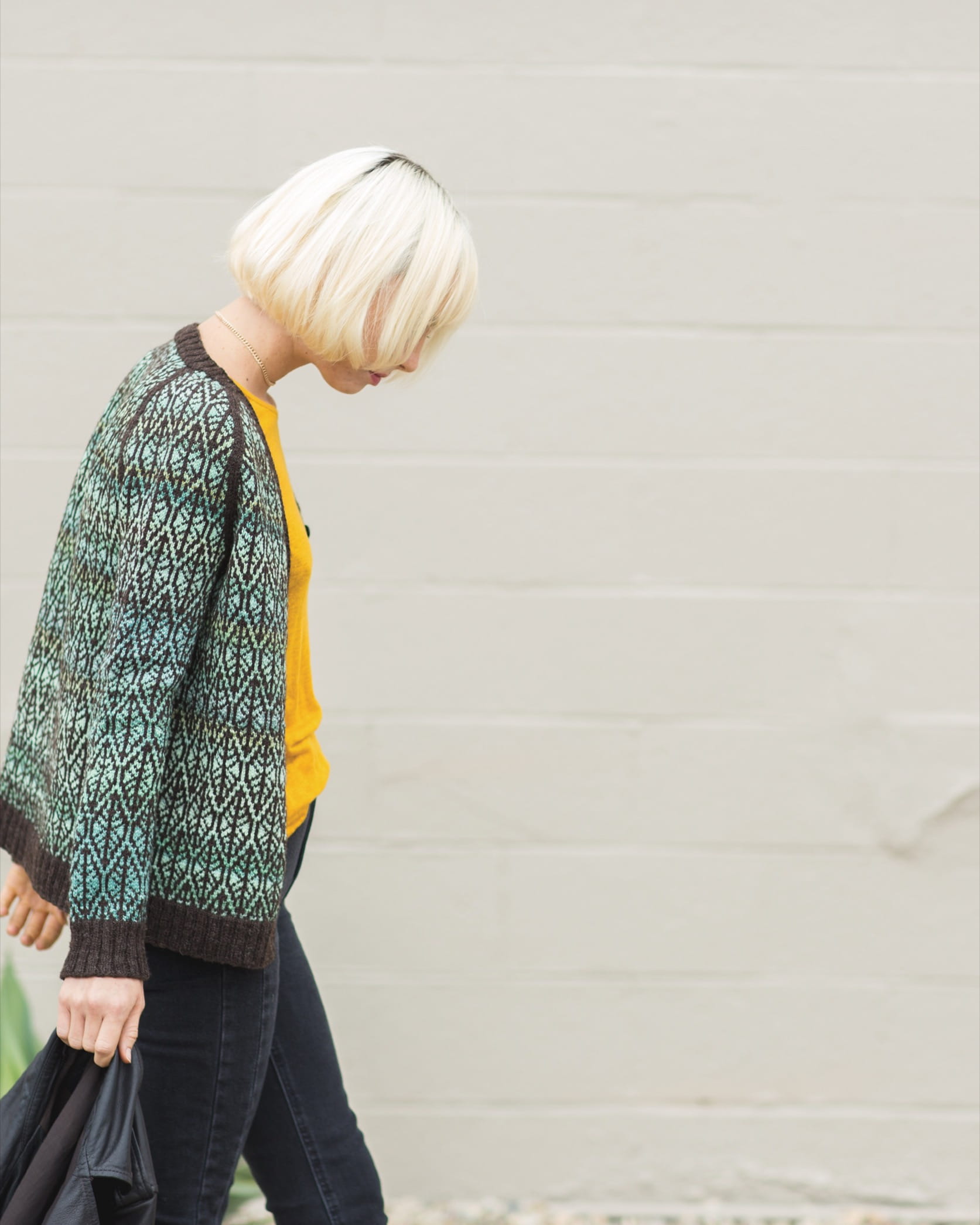Interweave
An imprint of Penguin Random House LLC
penguinrandomhouse.com

Copyright 2017 by Andrea Rangel
Penguin supports copyright. Copyright fuels creativity, encourages diverse voices, promotes free speech, and creates a vibrant culture. Thank you for buying an authorized edition of this book and for complying with copyright laws by not reproducing, scanning, or distributing any part of it in any form without permission. You are supporting writers and allowing Penguin to continue to publish books for every reader.
ISBN 9781632505538
Ebook ISBN 9780593327852
Editors: Erica Smith and Kerry Bogert
Acquisitions Editor: Stephanie White
Editorial Director: Kerry Bogert
Technical Editor: Susan Moskwa
Creative Director: Debbie Long
Cover Designer: Charlene Tiedemann
Illustrators (how-to illustrations): Sue A. Friend, Kathie Kelleher
Illustrator (charts): Sean Rangel
Photographer (garments): Harper Point Photography
Photographer (swatches): George Boe
pid_prh_5.5.0_c0_r0
INTRODUCTION
Ive been knitting voraciously since I was seventeen. Theres something about it that has always excited me and kept me wanting more. Non-knitters give me the side-eye when I say knitting is thrilling, but thats the emotion I most associate with it because the possibilities seem infinite, and the challenges keep presenting themselves. It amazes and delights me that theres still so much more to learn. Ive never been the kind of knitter who got hooked on one kind of project or technique, so Ive designed everything from lace shawls to colorwork sweaters to cabled leggings, but over the years Ive found immense satisfaction in delving deep into particular aspects of my craft one at a time. Focusing on a single topic is enriching and enjoyable. This book is one of those deep dives; Ive taken this year to focus on stranded colorwork, and Im so happy to share the result with you!
I greatly admire the traditions weve received, such as Fair Isle and Cowichan knitting, but Im a little unconventional in my feelings about colorwork. Ive always wanted to go out-of-bounds a bit. My husband, Sean, who graduated with a degree in fine art, has always encouraged me to try colorwork that doesnt follow the usual rules or adhere to a common aesthetic. In fact, his encouragement has often come in the form of him creating charts for me to try in multiple iterations. Weve worked together this way for yearshim drawing up a chart for me, me swatching it, and then the two of us together refining the charts and reswatching until we have a fabric we both love.
It was actually his idea to create this book, as a sort of extension of that collaborative process. Instead of sticking to tradition, we wondered what would happen if we didnt bother with the rules or with tradition. Could we introduce stitch motifs that knitters havent ever seen before? Could we inspire other knitters and designers to think about colorwork in a more expansive way? A big part of what made this work is that while Sean can knit, he doesnt do it much, so he doesnt think like a knitter. The motifs he created (all 200 of them!) arent all what youll usually find in a stitch dictionary or on a sweater because they come from his artistic background and imagination. But each one has been tested and swatched by me (most definitely a knitter!), so you can see how they work in knitted fabric.
Our hope with this book is that you, the knitter, find inspiration in these pages to break the rules with confidence. Take the motifs weve created and deconstruct them, combine them, and use them to make projects and designs you love!
About This Book
This book is in part an extensive stranded colorwork stitch dictionary. It includes 200 original motifs for you to use in your own knitting and design. (Its got a laser focus, so you wont find any intarsia, mosaic, or other color techniques here.) But its also a resource for you to dive into stranded colorwork with confidence. Youll find information on how to knit with two colors, how to manage your balls of yarn, what to do about floats, and when and how to cut your knitting up! Ive also included tips on how to make your fabric smooth and beautiful, as well as information on how to use the motifs in your own design work. (And yes, you may use the motifs for fun and profit!)
To help you better envision how stranded colorwork can be used in design (and because I really love making sweaters), this book also includes five original projects that employ motifs from the booktwo sweaters, a hat, a cowl, and a pair of mittens. This range of items shows a huge variety in how colorwork motifs can be used, and I hope they serve as a springboard for you. Id love for knitters to make the patterns as they find them, but Im also keen to see folks switch out the motifs and make them their own.
So flip through these pages! Let your imagination run away with you, and then get out your needles and yarn and get swatching!
Happy knitting,
ANDREA & SEAN
CHOOSING YARNS & COLORS
Yarns
You can work stranded colorwork with most kinds of yarn, but you'll probably want to start out with a wooly, tweedy, woolen-spun yarn. Blocking these kinds of yarns causes the stitches to bloom and settle into each other, making a cohesive fabric that shows the color patterns and softens most uneven tension. Smoother, worsted-spun yarns are crisp and clear, but make uneven stitches show up more distinctly. The swatches in this book were created with a gorgeous round worsted-spun yarn, Quince and Co. Finch. It makes for bright, clear swatches with high contrast, which was my main goal for this book, but keeping those stitches even took a bit more effort than it would have if I had used a woollier yarn.
Fibers such as alpaca, silk, and cotton really show off any inconsistencies in stitches because they have little or no memory (theyre not bouncy), and the fabric will be quite heavy due to the thickness of colorwork. They can also grow out of shape over time, since theyre so slippery.
Colors
Deciding which colors you like together is deeply personal, and a big part of creativity in knitting. My suggestions on choosing colors arent rules, but rather tools that you can use when youre applying your own creative power. Colors can be an expression of your mood, your personality, your style, or just where youre at in your life. Its important that you use colors that inspire you, but not all color combinations will work equally well. Most of the time using colors that contrast strongly with each other will look best, because it will make the color pattern stand out clearly. So how can you tell which colors will contrast with each other?

